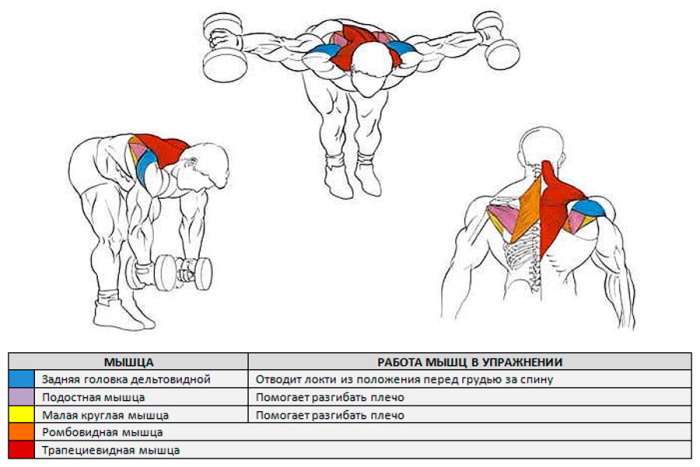Incline dumbbell breeding is widely used in various training complexes and programs. The exercise is aimed at developing the muscles of the shoulder girdle and back. The displacement of the load on a particular muscle group depends on the position of the student's body and the trajectory of hand movement.
Essence and basic principles
Bent-over dumbbell set is an isolated one joint exercise. This means that, subject to the correct execution technique, only one shoulder joint is involved in the movement process. All other joints of the human body must be static or maintain a given position.
When performing arm dilutions through the sides in an incline, the following muscle groups are included in the work:
1. Back muscles:
- Large round muscle;
- Trapezius muscles.
2. Deltoid muscles:
- Posterior deltoid;
- Middle deltoid.
3. Shoulder muscles:
- Triceps and biceps.
On the last muscle group, a static load is applied to hold the arm with weights in a given position. The biceps and triceps muscles balance each other, maintaining the necessary bend in the elbow, not allowing the forearm and hand to come close to the shoulder.
Standing bent over dumbbell breeding involves many small stabilizer muscles. In this exercise, static tension is present in the muscles of the core and lower body.
Varieties of setting dumbbells in an incline
There are several basic types of bent-over dumbbell breeding: standing, sitting and supported breeding.
Breeding standing
It is necessary to begin this exercise by mastering the correct starting position. This requires the practitioner to be flexible and developed muscles of the middle part of the body.
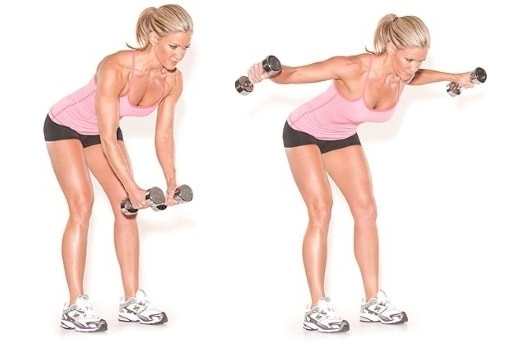
- First, you should straighten up and take an upright position. At this stage, it is important to feel the natural deflection in the lumbar spine. In the future, in order to reduce the risk of injury, it will need to be observed.
- Take dumbbells. The upper limbs should be slightly bent at the elbows.
- Tilt the body parallel to the floor. In this case, the deflection in the lower back should be natural. Slouching and rounding are not allowed in both the lower and upper back. Particular attention is paid to the angle of inclination of the body. If the practitioner lacks flexibility or elasticity in the muscles of the back of the thigh, then a slight bend in the knee joint is allowed. The pelvis can be pulled back a little.
- After the athlete has given his body a horizontal position, attention should be paid to the position of the shoulders. They should be deployed and lie on the same imaginary line. If the shoulders are dropped down or raised high up, then the amplitude of the exercise will decrease. In this case, it will not be possible to achieve peak contraction and stretch of the target muscle.
- Arms. One of the highlights is hand position. The elbows should be slightly outward.This will allow you to spread them across the sides in the same plane. This trajectory is necessary to train the rear deltas. Leaving your elbows in a natural position makes them much more difficult to control. With general fatigue and in view of the anatomical features of the structure of the human body, the main load, in this case, will be taken by the stronger large round muscles. And breeding through the sides will turn into bent-over dumbbell rows.
Setting dumbbells in an incline to the rear deltas is a technically difficult exercise. High demands are placed on the position of the student's body.
If the angle between the horizontal and the line of the upper body is more than 15-20 degrees, then the load will shift from the rear beam of deltas to the middle one. If the angle is negative, then the tension in the lower back will exceed the permissible level. In this case, the risk of injury will increase significantly.
Sitting breeding
Breeding dumbbells for deltoid muscles from a sitting position differs from the previous version by the presence of a fulcrum. The practitioner selects the height of the bench so that the hips take a position slightly below the horizontal. In this case, the knee should be below the upper thigh. This is necessary to ensure the correct position of the body.
You should also pay attention to the correspondence of the bench height and the athlete's arm length. At the bottom of the trajectory, the dumbbells should go under the thigh and not touch the floor. Bending the arm at the elbow joint is not desirable.
This exercise is suitable for beginners. The presence of support allows the athlete to get rid of the need to monitor the position of the body. The ribcage fits snugly to the thigh, and the lower limb itself is rigidly fixed on the floor surface. This makes it possible to create a stable system in which the athlete can concentrate on the work of the rear deltas.
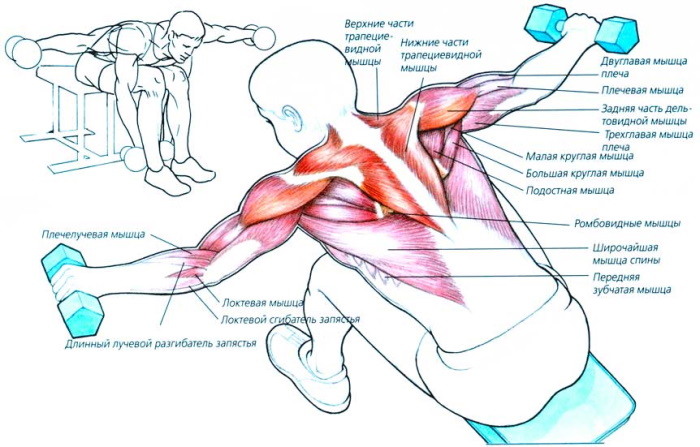
Breeding dumbbells in an incline with support
For the supported exercise, you can use a hyperextension machine or an adjustable back bench.
This option for dumbbell breeding in an incline for the rear deltas allows you to completely relieve tension from the back and legs. This is necessary in cases where the student has a weak body and, due to the peculiarities of the body constitution, cannot perform breeding while sitting.
With this embodiment of the exercise, the starting position directly depends on the choice of auxiliary equipment. The hyperextension machine does not change the basic guidelines. When using a reclining bench, it is important to understand the functional challenges facing the target muscle group.
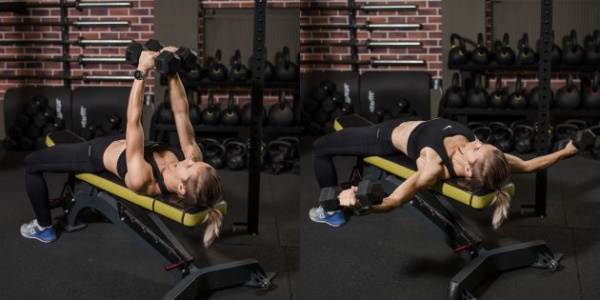
It should be remembered that when the angle between the body and the floor is close to 90 degrees, part of the load will be taken by the anterior deltoid muscles.
Indications for the beginning of use
The posterior deltoid muscles compensate for the tension arising from the disproportionate development of the muscles of the front of the body in relation to the back. Most of a person's daily tasks are in front of his eyes.
People reach for objects, pick them up and perform other actions strictly in front of themselves. As a result, an imbalance is formed between the muscles of the face of the body and the back. The result of this process is slouching and rounded shoulders. In order to avoid these consequences, the internal muscles of the back, posterior deltas and rotator cuff should be trained.
Contraindications for use
The incline dumbbell layout, due to the presence of three options for its implementation, has no obvious contraindications.
It can be performed by people of all ages. An exception is people who have muscle sprains in one or more of the muscle groups involved.
Helpful hints
The main recommendation when performing dumbbell breeding through the sides in an incline is a gradual progression of the load. Do not rush and use too heavy dumbbells during training. This exercise is not basic and will not help build the muscle volume of the posterior deltas.
The best option for beginners would be to introduce incline spreading into the training process without using additional weight. or with dumbbells weighing no more than 1-2 kg. Initially, it is important to establish the neuromuscular connection between the brain, the central nervous system and the contracting muscle.
In other words, the wiring must be done consciously. It is required to understand how much, at a given time, the back delta is reduced. And also be able to give the right impulse so that the muscles contract even more.
When using large working weights, this effect will not work, since the movement will be carried out automatically. The exercise will turn into swings and wiring. Which is strongly discouraged.
In addition to muscle contraction, it is necessary to pay attention to its stretching in the negative phase of the movement. Without high-quality and amplitude stretching, it will not be possible to achieve a correct and complete contraction. And without a complete reduction, breeding with dumbbells through the sides does not make sense.
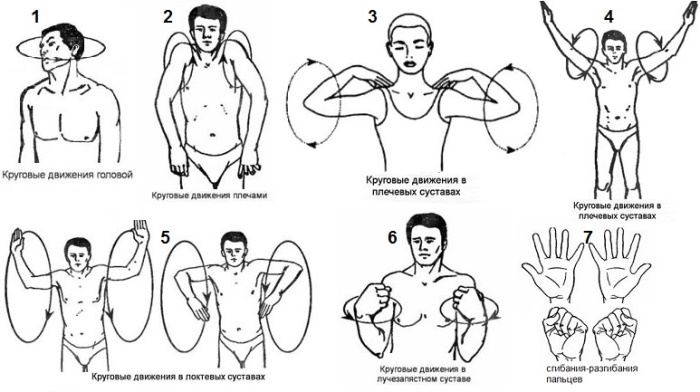
When working on the muscles of the shoulder girdle, you should pay great attention to warm-up. The joint moves in several planes and if there is insufficient warming up, it is easy to pull any of the deltas before exercising. For warm-up, you can use joint gymnastics complexes. They should be performed before perspiration appears.
You can use the Athletic Waist Belt when running over the sides while standing. It allows you to reduce the load on the spine, and allows you to concentrate on the exercise. Wrist straps can also be used. They will help get rid of the problems associated with holding the dumbbell in the right position. This allows you to better concentrate on the work of the deltoid muscles.
Main complex
The incline dumbbell set is not used as a mass-gaining exercise, but at the same time it is the basis for training the muscles of the back of the shoulder. The greatest effect of dumbbell dilutions on the back delta can be achieved when combined with basic movements.
3-Day Split Workout Program
When building a sports program, it is most often divided into 3 training days. On each of these days, a large muscle group and several smaller ones are necessarily included. There are other ways to organize a training split, but when forming a complex of movements for 3 days, this principle is most often used.
For beginners, the best option would be to combine the pectoral muscles and deltas. At the same time, in what sequence the days in the split follow each other is not of fundamental importance. This way of organizing training allows the athlete to load the front deltas with large weights during the bench press.
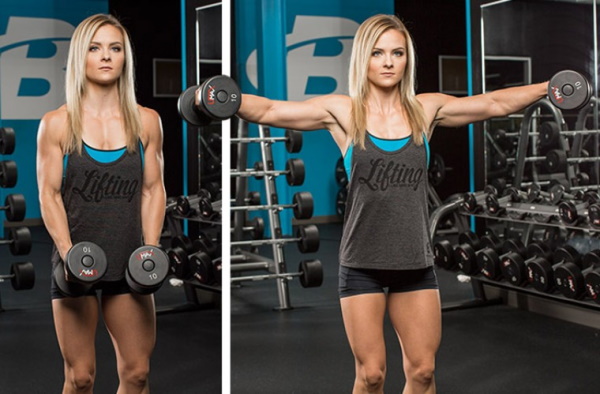
Such a training program may look like:
- Breeding across the sides from a standing position 3 * 12-15 reps.This exercise is aimed at developing the middle bundle of the deltoid muscles. When performing it, special attention must be paid to the position of the dumbbells in the hands. To isolate the target muscle, tilt the front of the inventory slightly forward so that the little finger is slightly higher than the thumb. The arm at the elbow should be slightly bent.
- Tilt layout 3 * 12-15 times. If there is a disproportion in development and there is a clear predominance of the middle beam over the back, then the exercises can be reversed.
Classic two-day split
With a 2-day split, 2 workouts are performed in a row. They are followed by 1 day of rest. Then the cycle repeats. In this case, the athlete conventionally divides his body into two parts. The lower body and abs are performed on the first day, and the upper body on the next.
This method of organizing the training process is optimal for those who are just starting to work out in the gym. You can practice it for up to 2-3 months. After that, the magnitude of the loads will increase so much that the body will no longer be able to recover from sports activities.
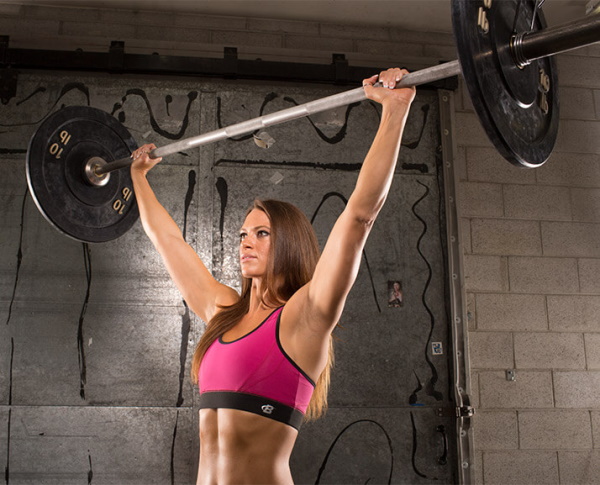
| Overhead press 4 * (8-10 reps) | This is a heavy, basic movement that engages all bundles of the deltoid muscles. The main work is performed by the anterior delta, and the posterior and middle beams are assigned a supporting role. The overhead press can be performed from a standing or sitting position. |
| Dumbbell set in an incline supported on a bench 3 * (12-15 times) | This type of exercise is perfect for a two-day split. After doing pull-ups, presses and deadlifts, there may be no strength left at the end of the workout. In such a situation, it is extremely difficult to perform standing dumbbell breeding. It is important to choose the correct angle of inclination of the bench. It should be comfortable to lean on. As a rule, in people of average height and standard build, this angle is in the range from 30 to 40 ° C. |
It should be noted that these exercises are not interchangeable. They must be performed strictly in the specified sequence.
Fixing the result
The bent-over dumbbell set is used in training to develop the posterior bundle of the deltoid muscles. This is a small muscle group that is not used very often in daily life. Due to its short length, it is difficult to increase it with stretching and gymnastics. In addition, it is possible to stimulate the posterior delta to growth thanks to isometric tension.
To do this, you can take the starting position for breeding or perform a standing movement. The elbows should be slightly raised, as required by the technique. Take your hands back and fix in this position for the maximum possible period of time. In this case, a light tingling sensation in it will become a signal that the muscle is contracted as much as possible.
When to expect the effect
The posterior delta is a small muscle that undergoes constant static stress. It keeps the shoulders unfolded and prevents them from rounding. Therefore, any dynamic loads associated with contraction and relaxation create numerous microdamages in its fibers.
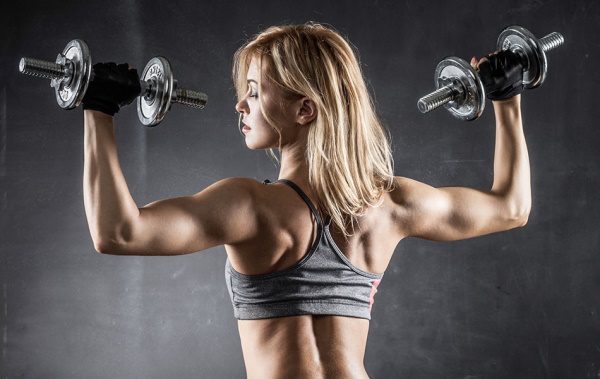
However, a lot also depends on the starting base. If a beginner athlete begins to perform this athletic movement, then the first results can come in 7-8 weeks. This is due to those that his body is just beginning to get used to training and has not yet developed the mechanisms of reaction to them.
Breeding dumbbells in an incline to the back delta is an integral part of the training process for those people who are aimed at maintaining correct posture and strengthening the spine.
Due to the presence of 3 variations: standing, supported and sitting - this sports movement is suitable for all categories of practitioners and has no special contraindications.
Video on the topic: bent-over dumbbell breeding: execution technique
Technique for performing the exercise "dumbbell breeding in a sitting incline":

